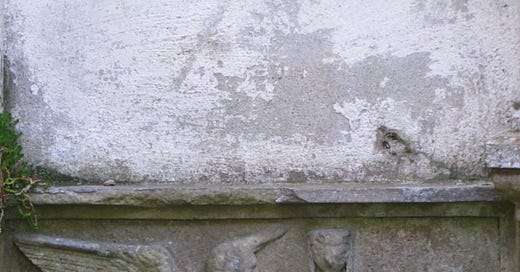How to be a Naturalist
AWE Season One Episode Two: Respecting the past and those who came before.
I could be glib, here, and just include a single sentence:
To be a naturalist, you need to examine nature—from near and far, past and present—and study it, recording what your senses tell you about individual species and their relationships, how they fit in with our wider, wilder world.
That’s more-or-less it, but that would make for a short and relatively boring post. Instead, I want to talk about my own journey to being a naturalist, and follow this with thoughts on how you can begin to find your own path. A path you are probably further along than you might realise.
A Little (Naturalist) History
I cannot recall a time I was not interested in nature. On one of the many bookshelves in the family home there is a field guide to butterflies. The inscription is from me or, more correctly, the gift was from me, the book itself was given to my dad in the late 1970s, when I was a very, very small thing (just a month old, if my memory of this book serves me) and, as such, unable to write or read. According to the inscription, and here I paraphrase, the small-baby-version of Alex enjoyed looking at butterflies with his—our—daddy. (If my mum is reading this and it is incorrect, do hit comment below and let me—and us—know!)
Even back then, long before I have memories, I was apparently looking at nature, but the crucial part of the above paragraph is really the fact my parents were both already interested in the natural world. To come from such a background, to have access to their experience and knowledge, and their library, meant I had a healthy head start on my own naturalist’s journey.
Fast-forward a few years and young, now-reading, Alex could be found either reading David Bellamy, David Attenborough, Gerald Durrell, or watching them on 1980s UK TV. I would look through field guides in the same way my schoolmates would flick through the Beano (note for non-UK readers, this is a very long-running and famous kids’ comic). I would think of what I had seen, and dream of what I wished to experience.
I wanted to live somewhere I knew there were wild wolves (✓), I wanted to find a scorpion carrying her babies (✓), and watch a peregrine stoop (✓), I wanted to see brown bears in their natural, wild habitat (X), see the migration of the monarch butterflies (X), or witness a vast herd of wildebeest crossing a river (X). These are just a few—there are many, many others.
Some of the field guides, especially those centred on birdlife, would tell me a species was rare, limited in its range, or a passing migrant, but I would see them often in Orkney, where I was raised from the age of 8 to 18. Looking back, I remember wishing for trees, wanting to see foxes, badgers, or deer. It is a strange thing, to consider how the species I could see, such as the hen harrier, merlin, short-eared owl, seals, orca, or Orkney vole were always wonderful, but never enough.
Even now, years later and many, many miles travelled, I still think of what I have not seen, of those as-yet-unticked boxes. And, one thing I have learned in those decades, is that boxes ticked are also never enough.
I live where there are wolves, I have heard them howl in other places, I have seen their tracks, found their kill, but I have never seen them in the wild. I want to do that. I want to track them and I want to photograph them.
I have seen a scorpion carrying her babies, seen more than one species of scorpion, for that matter, but I have never shone a UV light on them in a dark place. I want to do that.
To begin studying nature is to open Pandora’s box. One thing will lead to another, which in turn shall reveal an entirely different box within, all neatly packaged and ready to be untied. Having a list is one thing, but it is a list which shall be added to eternally: you will NEVER reach the end.
Isn’t that just so wonderful?
Begin to add in the different and varied uses we humans once discovered and used to enable us to thrive, and the amount of knowledge you can accumulate becomes truly extraordinary, yet you will forever be the student. Know how to light a fire with a bow drill? How many different wood combinations have you tried? What about using various types of natural cordage? How many medicinal plants do you know? How many uses from just one plant? Can you make arrowheads with different materials: bone, antler, stone? What does that cloud mean for the weather tomorrow?
So much to learn and, by doing so, so many opportunities to grow and broaden your view of our world.
Yet it all starts at home.




